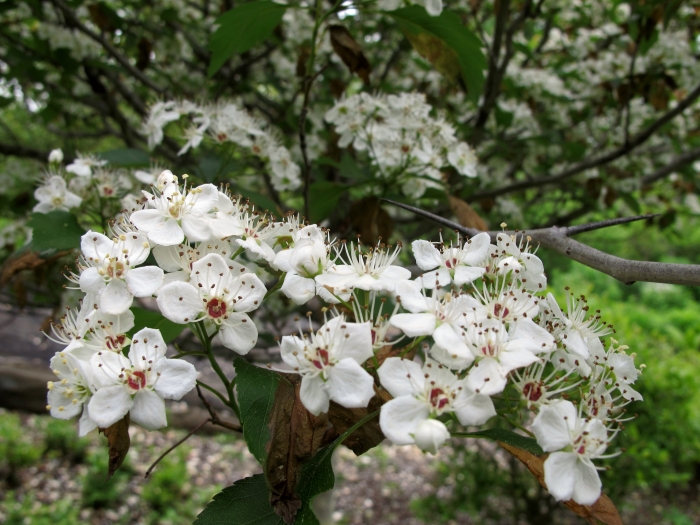Green Hawthorn
(Crataegus viridis)
Green Hawthorn (Crataegus viridis)
/
/

Kristine Paulus
CC BY 2.0






















































Estimated Native Range
Summary
Green Hawthorn is appreciated for its ornamental features, including the white flowers which are moderately showy, and its ability to adapt to various urban conditions. It is used for border planting, as a specimen tree, and in wildlife gardens. ’Winter King’ is a popular cultivar known for its larger, more abundant fruits and silvery-barked branches. This species prefers full sun but can tolerate part shade, and it requires well-drained soils. While it is adaptable to different soil types, it does best with consistent moisture. It is relatively low-maintenance but can be susceptible to rust diseases and fire blight.CC BY-SA 4.0
Plant Description
- Plant Type: Tree
- Height: 20-35 feet
- Width: 20-35 feet
- Growth Rate: Moderate
- Flower Color: White
- Flowering Season: Spring
- Leaf Retention: Deciduous
Growth Requirements
- Sun: Full Sun, Part Shade
- Water: Medium
- Drainage: Medium
Common Uses
Bee Garden, Bird Garden, Butterfly Garden, Deer Resistant, Drought Tolerant, Edible*Disclaimer: Easyscape's listed plant edibility is for informational use. Always verify the safety and proper identification of any plant before consumption., Fire Resistant, Hedges, Hummingbird Garden, Low Maintenance, Rabbit Resistant, Showy Flowers, Street Planting
Natural Habitat
Riverine forests, floodplains, and open woodlands of the southeastern United States
Other Names
Common Names: Southern Hawthorne, Southern Thorn
Scientific Names: , Crataegus viridis, Crataegus viridis var. lanceolata, Crataegus viridis var. viridis, Crataegus ×furcata, Crataegus atrorubens, Crataegus paludosa, Crataegus arborescens, Crataegus interior, Crataegus micrantha
GBIF Accepted Name: Crataegus viridis L.